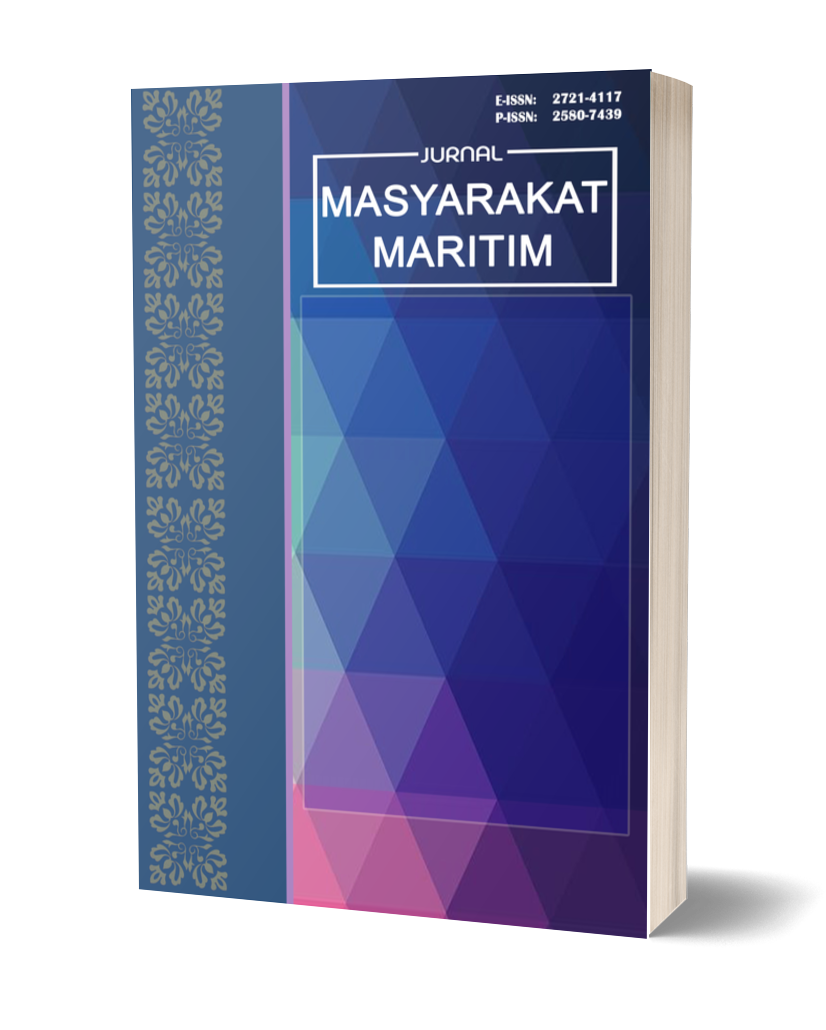Kabut Asap, Ancaman Terhadap Human Security dan ASEAN Way
DOI:
https://doi.org/10.31629/jmm.v5i1.3431Keywords:
Keywords: Haze, Human Security, ASEAN WayAbstract
Forest fires and haze become annual trend phenomena of the failure Southeast asia regional and related institutions in prevention efforts of haze problems. Comprehensive Monitoring and rules enforcement to prohibition forest fires shows how authorized institutions have difficulties and boundaries to punish the land owners who burn the forests, and to stop cleaning land by burning the forest and land. This research describes the causes of haze occur in Southeast asia, the threats of haze pollution and why ASEAN through its ASEAN Way not success yet in solving haze pollution that contributes insecure human security of millions people in this region. This research apply neoliberal institutionalism approach and collect the data from library research. This research shows that in regional level, ASEAN continuesly do cooperation and formulate policies to solve the regional haze problems. In Ministerial Meeting Level, ASEAN has reviewed Regional Haze Action Plan and finally sign the ASEAN Agreement on Transboundary Haze Pollution, an agreement which is binded and ratified all the member of ASEAN. Keywords: Haze, Human Security, ASEAN WayDownloads
References
Aggarwal, V. K., & Chow, J. T. (2010). The perils of consensus: How ASEAN’s metaregimeundermines economic and environmental cooperation. Review of International Political Economy, 17(2), 262-290.
ASEAN Secretariat. (1995). ASEAN meeting on the management of transboundary pollution.
ASEAN Secretariat. (2002). ASEAN agreement on transboundary haze pollution.
ASEAN Secretariat. (2003). ASEAN peatland management initiative.
ASEAN Secretariat. (2004). 4: Transnational issues. Paper presented at the ASEAN Annual Report.
ASEAN Secretariat. (2007). Review of existing ASEAN institutional mechanisms to deal with land and forest fires and transboundary haze pollution. Paper presented at the 2nd prepatory meeting for the 2nd meeting of the Conference of the Parties.
ASEAN Secretariat. (2009). Overview.
Barber, C.V. & Schweithelm, J. (2000) Trial by Fire: Forest Fires and Forestry Policy in Indonesia’s Era of Crisis and Reform. World Resources Institute, Washington, DC, USA.
Beeson, M. (2007). Regionalism and globalization in East Asia: Politics, security and economic development. New York: Palgrave.
Campbell, L. B. (2005). The political economy of environmental regionalism in Asia. In T.J. Pempel (Ed.), Remapping East Asia: The construction of a region. Ithaca: Cornell University Press.
Chang, L. L., & Rajan, R. S. (2001). Regional versus multilateral solutions to transboundary environmental problems: Insights from the Southeast Asian haze. Transboundary Environmental Problems in Asia, 655-670.
CHS (Commission on Human Security). 2003. Human Security Now. New York: Commission on Human Security.
Cotton, J. (1999). The “haze†over Southeast Asia: Challenging the ASEAN mode of regional engagement. Pacific Affairs, 72(3), 331-351.
Ekadinta, S., Van NoordwiI JK, M., Budidarsono, S. & Dewi, S. (2013) Hot Spots in Riau, Haze in Singapore: The June 2013 Event Analysed. ASB Policybrief No. 33. ASB Partnership for the Tropical Forest Margins, Nairobi, Kenya.
Elliott, L. (2000). ASEAN’s environmental regime: Pursuing sustainability in Southeast Asia. Global Environmental Change, 10, 237-240.
Elliott, L. (2001). Regional environmental security: Pursuing a non-traditional approach. In A. T. H. Tan & J. D. K. Boutin (Eds.), Non-Traditional Security Issues in Southeast Asia (pp. 438-459). Singapore: Select Publishing.
Elliott, L. (2003). ASEAN and environmental cooperation: Norms, interests and identity. The Pacific Review, 16(1), 29-52.
Ferguson, R. J. (2004). ASEAN Concord II: Policy Prospects for participant regional “Developmentâ€. Contemporary Southeast Asia, 26, 393.
Francesch-Huidobro, M. (2008). The power of circumvention: Fighting the Southeast Asian forest fires and haze. Governance, politics and the environment: A Singapore study. Singapore: Institute of South East Asian Studies.
Gan, T. L. (1972). Smoke haze over Singapore. Meteorological Service Singapore.
Gaveau, D.L.A., Salim, M.A., Hergoualc’h K., Locatelli, B., Sloan, S.,Wooster, M. et al. (2014) Major atmospheric emissions from peat fires in Southeast Asia during non-drought years: evidence from the 2013 Sumatran fires. Scientific Reports,4, 6112.
Glover, D. & Jessup, T. (eds) (2006) Indonesia’s Fires and Haze: The Cost of Catastrophe. International Development Research Centre, Ottawa, Canada.
Heil, A. & Goldammer, J.G. (2001) Smoke-haze pollution: a review of the 1997 episode in Southeast Asia. Regional Environmental Change, 2, 24-37.
Keohane and N. Nye (1977) Power and Interdependence: World Politics in Transition (Boston: Little Brown).
Khoo, N. (2004). Deconstructing the ASEAN security community: A review essay. International Relations of the Asia Pacific, 4(1), 35.
Kim, M. (2011). Theorizing ASEAN Integration. Asian Perspectives, 35, 407-435.
Kratochwil, F. V. (1984). The force of prescriptions. International Organization, 38(4).
Kratochwil, F. V. (1989). Rules, norms, and decisions: On the conditions of practical and legal reasoning in International Relations and Domestic Affairs Cambridge: Cambrdige University Press.
Leifer, M (2006) in J. C. Liow and R. Emmers (eds) Order and Security in South East Asia. Essays in Memory of Michael Leifer (New York: Routledge), p. 4.
Lohman, D.J., Bickford, D. & Sodhi, N.S. (2007) The burning issue. Science, 316, 376.
Murdiyarso, D. & Adiningsih, E.S. (2007) Climate anomalies, Indonesian vegetation fires and terrestrial carbon emissions. Mitigation and Adaptation Strategies for Global Change, 12, 101-112.
Murray, P. (2010, 27-29 September). The European Union as an integration entreprenur in East Asia - Yardstick or cautionary tale? Paper presented at the Australian Political Studies Association Conference, Melbourne.
Narine, S. (1998a). ASEAN and the management of regional security. Pacific Affairs, 71(2), 195.
Narine, S. (1998b). Institutional theory and Southeast Asia: The case of ASEAN. World Affairs, 161, 33.
Nesadurai, H. (2003). Attempting developmental regionalism through AFTA: The domestic sources of regional governance. Third World Quarterly, 24, 235.
Nesadurai, H. (2008). The Association of Southeast Asian Nations (ASEAN). New Political Economy, 13(2), 225.
New Straits Times. (1997, September 25). EPSM wants haze constituents to be made public.
Nguitragool, P. (2011). Negotiating the haze treaty. Asian Survey, 51(2), 356-378. Parliament of Singapore. (1998). ASEAN region haze action plan (fulfillment of obligations) (1998-01-15).
Page, S.E., Siegert, F., Rieley, J.O., Boehm, H.-D.V., Jaya, A. & Limin, S. (2002) The amount of carbon released from peat and forest fires in Indonesia during 1997. Nature, 420, 61-65.
“Pakar: Asap Riau Terparah Sepanjang Sejarahâ€. (2013, June 25), <https://regional.kompas.com/read/2013/06/25/1129083/Pakar.Asap.Riau.Terparah.Sepanjang.Sejarah> [diakses 16 October 2018]
Pempel, T. J. (2005). Introduction: Emerging webs of regional connectedness. In T. J. Pempel (Ed.), Remapping East Asia: The construction of a region. Ithaca: Cornell University Press.
Perwita, Nur Hidayah: “Kabut Asap Tipis Selimuti Pekanbaru-Dumai Akibat Karhutlaâ€, July, 14 2019, https://tirto.id/kabut-asap-tipis-selimuti-pekanbaru-dumai-akibat karhutla-eeeh>, [diakses, Juli 2019]
Quah, E. (2002) Transboundary pollution in Southeast Asia: the Indonesian fires. World Development, 30, 429-441.
Roadmap. (2016). “ Roadmap on ASEAN Cooperation Towards Transboundary Haze Pollution Control With Means of Implementation’. http: / haze.asean.org/wp-content/uploads/2017/10/Roadmap-ASEAN-Haze-Free_adoptedlyCOP12.pdf (diakses 5 Oktober 2018).
Sarmiento, Prime (2015). “The Philippines hit by worst haze in 20 yearsâ€, https://www.asianscientist.com/2015/11/features/philippines-worst-haze-20- years/, [diakses 16 Oktober 2018]
Severino, R. C. (2006). Southeast Asia in Search of an ASEAN community: Insights from the former ASEAN Secretary-General. Singapore: ISEAS.
Severino, R. C., Hew, D., Suryadinata, L., Hsu, L., & Moeller, J. O. (2005). Framing the ASEAN charter. Singapore: ISEAS.
Simon (1994) ‘Realism and neoliberalism: international relations theory and Southeast Asian security,’ The Pacific Review , 8 (1), 5–24.
Smith, A. L. (2004). ASEAN’s ninth summit: Solidifying regional cohesion, advancing external linkages. Contemporary Southeast Asia, 26, 416.
Solingen, E. (1999). ASEAN, Quo Vadis? Domestic coalitions and regional co-operation. Contemporary Southeast Asia, 21(1), 30.
Solingen, E. (2005). East Asian regional institutions: Characteristics, sources, distinctiveness. In T. J. Pempel (Ed.), Remapping East Asia: The construction of a region. Ithaca: Cornell University Press
Tan, B. (2005). The norms that weren’t: ASEAN’s shortcomings in dealing with transboundary air pollution. International Environmental Politics, Spring 2005.
Tan, K. T., Lee, K. T., Mohamed, A. R., & Bhatia, S. (2009). Palm oil: Addressing issues and towards sustainable development. Renewable and Sustainable Energy Reviews, 13, 420-427.
Tay, S. (1998). South East Asian forest fires: Haze over ASEAN and international environmental law. Reciel, 7(2), 202-208.
Tay, S. (2008). Blowing smoke: Regional cooperation, Indonesian Democracy, and the haze. In D. K. Emmerson (Ed.), Hard choices. Singapore: ISEAS.
Tay, S. S. C. (2002). Fires and haze in Southeast Asia. In P. J. Noda (Ed.), Cross-sectoral partnerships in enhancing human security (pp. 53-80). Tokyo: Japan Center for International Exchange.
UNDP (United Nations Development Programme). 1994. Human Development Report 1994: New Dimensions of Human Security. New York: Oxford University Press.
Varma, A. (2003) The economics of slash and burn: a case study of the 1997-1998-Indonesian forest fires. Ecological Economics, 46, 159-171.
Wee, P. (1973, July 21). Factory smoke blamed for haze. The Straits Times.
Yahaya, N. (2000). Transboundary air pollution: Haze pollution in Southeast Asia and its significance. Journal of Diplomacy and Foreign Relations, 2(2), 41–50.
Zainal Abidin [M38], A. (2010). Deputy Director, Pusat Tenaga Malaysia. Kuala Lumpur.














